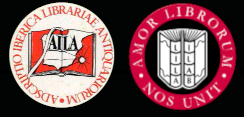


Home |
Temáticas |
Catálogos |
Pedidos |
  |  |
|||||||
|

|
RUGENDAS. (Johann Moritz) HABITANTE DE GOYAS, QUADRO A ÓLEO PINTADO SOBRE MADEIRA. |
|
|
Clique nas imagens para aumentar. HARDOUIN, Gillet. BOOK OF HOURS. PARIS. Circa 1521. Horae diuine virginis Marie secundum vsum Romanumcum aliis multis folio se= quenti notatis: vna cum figuris Apocalipsis & destructio Hierusalem & multis figuris Biblie insertis: [...] Almanach: pro. xiii annis. N.D.xx viii.aprilis [...] M.D.xxxii. xxxi.marcij. [...] [Colofon]: Finit officiu[m] bte Marie virginis se[cun]dum vsus Romanum: cum missa eiusde[m]: & septem psalmi penitencialibe cu officio mortuor /sancte Crucis & sctispus: vna cvm horis Cõceptiõis eiusdem gloriose virginis: & scte Barbare: cum orationib sti Gregorii / & aliorum sctor sufragiis Parisius / nouiter impressum. Opera Germani Hardouyn. [Paris, circa 1521?] In 8. º (11.5x17 cm) with 96 folios. Impressão sobre velino [pergaminho] utilizando caracteres itálicos a preto, com 29 linhas por página, e um quadrilongo decorativo em toda a impressão. Encadernação do século xvii inteira de marroquim vermelho lavrada com ferros a ouro e com aplicações artísticas em relevo em metal dourado, com falta de alguns elementos como seja os medalhões centrais. Ilustrado com 20 gravuras de página inteira iluminadas, 12 gravuras de pequena dimensão iluminadas, e centenas de capitulares xilograficas a longo do texto iluminadas. Frontispício ilustrado com uma gravura com a marca do impressor Gille Hardouin, tendo no reverso a gravura iluminada do homem anatómico rodeado pelos 4 elementos. Todos os fólios de texto apresentam gravuras marginais com cenas bíblicas. Exemplar com anotação manuscrita em francês na folha de guarda 'À en juger par la reliure, ce livre d’heures doit avoir appartenu à Henry IV ou à Maria de Medicis. Les figures des angels sont en or' (a julgar pela encadernação este livro terá pertencido a Henrique IV ou Maria de Medicis (1575-1642). As figuras dos anjos são em ouro).
In 8. º (11.5x17 cm) with 96 folios. Printing on vellum [parchment] using black italic characters and with 29 lines per page. Binding: Full red morocco from the 17th century; with artistic gold furnitures at corner edges; embossed in gold, lacking some elements such as the central super-libris medallions. Illustrated with 20 full page illuminated engravings, 12 small illuminated engravings, hundreds of woodcut illuminated capital letters. Frontispiece illustrated with an engraving with the mark of the printer Gille Hardouin, having on the reverse of title page an illuminated engraving of the anatomical man surrounded by the four elements. All text folios feature marginal engravings with biblical scenes. Copy with handwritten note in French on the first endpaper: “À en juger par la reliure, ce livre d’heures doit avoir appartenu à Henry IV ou à Maria de Medicis. Les figures des angels sont en or“ (Judging from the binding, this book of hours must have belonged to Henry IV or Maria de Medici. The figures of angels are in gold). Bohatta 1045 - Bibliographie der Livres d'Heures, Wien 1924. Cat. Heredia 94. Catalogue des Livres Imprimés sur Velin de la Bibliothéque du Roi. Paris.1822 (facsimile New York, 19??), pags. 176-177: «Édition en ancienne Bâtard, sans chiffres ni réclames, avec signatures et figures en bois, a longues lignes, au nombre de 28 sur les pages entières [...] VV - Vélin de veau - H. 201 m. (7 p. 51.)». The book of hours is a Christian devotional book popular in the Middle Ages. It is the most common type of surviving medieval illuminated manuscript. Like every manuscript, the book of hours are unique in one way or another, but most contain a similar collection of texts, prayers and psalms, often with appropriate decorations, for Christian devotion. The typical book of hours is an abbreviated form of the breviary which contained the Divine Office recited in monasteries. It was developed for lay people who wished to incorporate elements of monasticism into their devotional life. Reciting the hours typically centered upon the reading of a number of psalms and other prayers. A typical book of hours contains, as this one contains: a Calendar of Church feasts; an excerpt from each of the four gospels; the little Office of the Blessed Virgin Mary; the fifteen Psalms of Degrees; the seven Penitential Psalms; a Litany of Saints; an Office for the Dead; The Hours of the Cross; and various other prayers (in this case to St. Gregory, St. Barbara, and St. Apolonia). Many books of hours were made for women. There is some evidence that they were sometimes given as a wedding present from a husband to his bride. Frequently they were passed down through the family, as recorded in wills. From the 14th century decorated borders round the edges of at least important pages were common in heavily illuminated books, including books of hours. In the present case the book is printed with a decorative typographical framework. By the mid-15th century a much wider group of nobility and rich businesspeople were able to commission highly decorated, often small, books of hours. With the arrival of printing the market contracted sharply, and by 1500 the finest quality books were once again being produced only for royal or very grand collectors.
Referência: 1306JC008
Local: 6-AF-C Indisponível Caixa de sugestões A sua opinião é importante para nós. Se encontrou um preço incorrecto, um erro ou um problema técnico nesta página, por favor avise-nos. 
|
Pesquisa Simples




|
||
 |
|||
|